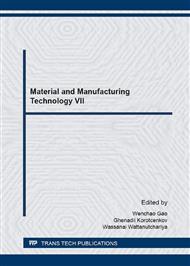p.235
p.242
p.248
p.253
p.261
p.266
p.271
p.276
p.281
Influence on Fatigue and Biomechanics of Cone Fit of Dental Implant around the Surrounding Bone Tissue
Abstract:
In this paper, the purpose is to compare three different cone fit of dental implant around the surrounding bone tissue that influence on fatigue and biomechanics, it is also to provide a theoretical basis for the design and clinical application of dental implant. The method is that loading the force 100N and 200N with different angle to the three different cone with dental implant with the finite element analysis (FEA) that analyzes the stress and fatigue in ideal conditions. The Results is that when the loading is vertical, cone for 3 degrees of the implant have the best performance. The cone for 80 degrees of the implant is min among the max equivalent stress of the implants. However, comprehensive view, Cone for 24 degrees of the implant the most stable. we find that cone of different implant when subjected to the same force the maximum equivalent stress is different, smaller conical implant under vertical load force have good performance, but with the increase of the loading angle the bigger conical implant performance better.
Info:
Periodical:
Pages:
281-286
Citation:
Online since:
September 2016
Authors:
Price:
Сopyright:
© 2016 Trans Tech Publications Ltd. All Rights Reserved
Share:
Citation:


